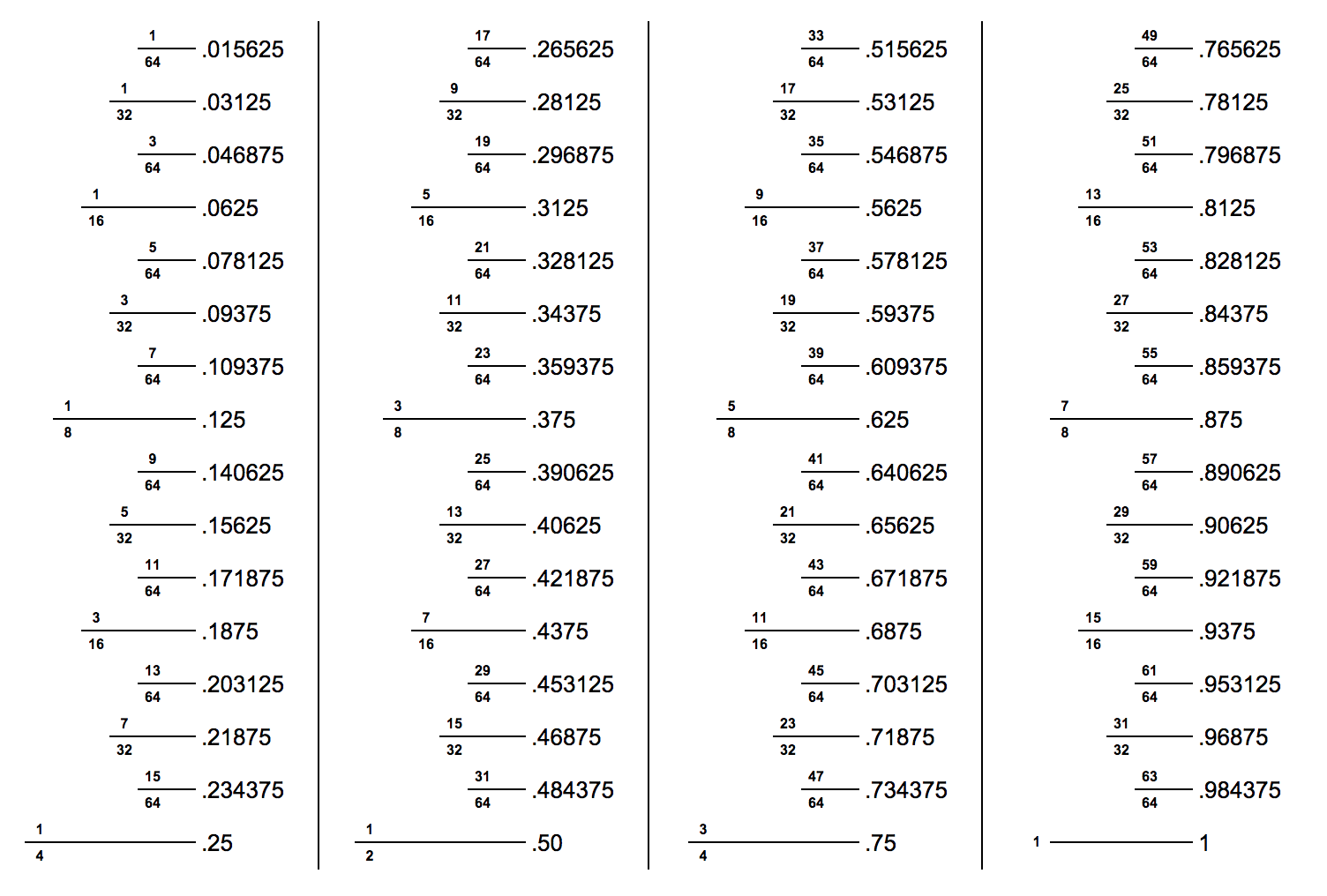Feet and Inches Calculator
Add or subtract lengths in inches (decimal or fraction), feet, centimeters, and millimeters. Enter equations just like you would write it on paper, e.g. 4′ 3 7/8″ + 5 cm.
See the results in inches, feet, centimeters, and millimeters – all results are in imperial and metric.
Feet and Inches Result
Imperial Units
Metric Units
On this page:
How to Add or Subtract Feet and Inches
Calculating feet and inches might seem complicated, but adding and subtracting measurements is actually really easy if you follow a few simple steps. While it’s easy to add or subtract feet and inches using a measurement calculator like the one above, if you follow a few basic steps, you can do it yourself!
Step One: Convert Feet and Inches to Decimal
The first thing to do when adding, subtracting, or doing other math with inches, feet, and other measurements is to convert all the measurements into a common unit of measure. For example, when reading a tape measure, inches will be in fraction form.
Let’s assume we want to perform a calculation using inches as our unit of measurement. Start by converting any fractional inches into decimals. Then convert any measurements in feet, centimeters, millimeters, etc. to inches.
Convert any inch fractions to decimal form by dividing the numerator of the fraction by the denominator, using a calculator if necessary. If there is a whole number associated with the fraction, add it to the decimal value after converting.
For example, if our measurement is 2 and 1/2 inches, first convert 1/2 to a decimal, which is 0.5, and then add it to 2, for a total of 2.5 inches.
You can also use an inch fraction calculator to quickly find the decimal value for an inch fraction.
For example:
3/8 = 3 ÷ 8 = .375 inches
Convert any feet to inches by multiplying the number of feet by 12, since there are 12 inches in a foot. Using a foot to inch conversion calculator also simplifies this step.
For example:
3 feet = 3 × 12 = 36 inches
For any other units of measurements, use our length converter to convert these units to decimal inches.
Step Two: Add or Subtract the Converted Values
With all your measurements now in an inch decimal form, add or subtract them as you normally would, using a calculator as needed. The final result will be the length in inches; you can convert the result to any other unit at this point.
To express the sum or difference value in feet, simply divide by 12.
The following charts simplify the process of adding and subtracting fractional inch values together and might be faster than using a calculator.
Inch Fraction Addition Chart
| + 1/8″ | + 1/4″ | + 3/8″ | + 1/2″ | + 5/8″ | + 3/4″ | + 7/8″ | + 1″ | |
|---|---|---|---|---|---|---|---|---|
| 1/8″ | 1/4″ | 3/8″ | 1/2″ | 5/8″ | 3/4″ | 7/8″ | 1″ | 1 1/8″ |
| 1/4″ | 3/8″ | 1/2″ | 5/8″ | 3/4″ | 7/8″ | 1″ | 1 1/8″ | 1 1/4″ |
| 3/8″ | 1/2″ | 5/8″ | 3/4″ | 7/8″ | 1″ | 1 1/8″ | 1 1/4″ | 1 3/8″ |
| 1/2″ | 5/8″ | 3/4″ | 7/8″ | 1″ | 1 1/8″ | 1 1/4″ | 1 3/8″ | 1 1/2″ |
| 5/8″ | 3/4″ | 7/8″ | 1″ | 1 1/8″ | 1 1/4″ | 1 3/8″ | 1 1/2″ | 1 5/8″ |
| 3/4″ | 7/8″ | 1″ | 1 1/8″ | 1 1/4″ | 1 3/8″ | 1 1/2″ | 1 5/8″ | 1 3/4″ |
| 7/8″ | 1″ | 1 1/8″ | 1 1/4″ | 1 3/8″ | 1 1/2″ | 1 5/8″ | 1 3/4″ | 1 7/8″ |
| 1″ | 1 1/8″ | 1 1/4″ | 1 3/8″ | 1 1/2″ | 1 5/8″ | 1 3/4″ | 1 7/8″ | 2″ |
Inch Fraction Subtraction Chart
| − 1/8″ | − 1/4″ | − 3/8″ | − 1/2″ | − 5/8″ | − 3/4″ | − 7/8″ | − 1″ | |
|---|---|---|---|---|---|---|---|---|
| 1/8″ | 0″ | -1/8″ | -1/4″ | -3/8″ | -1/2″ | -5/8″ | -3/4″ | -7/8″ |
| 1/4″ | 1/8″ | 0″ | -1/8″ | -1/4″ | -3/8″ | -1/2″ | -5/8″ | -3/4″ |
| 3/8″ | 1/4″ | 1/8″ | 0″ | -1/8″ | -1/4″ | -3/8″ | -1/2″ | -5/8″ |
| 1/2″ | 3/8″ | 1/4″ | 1/8″ | 0″ | -1/8″ | -1/4″ | -3/8″ | -1/2″ |
| 5/8″ | 1/2″ | 3/8″ | 1/4″ | 1/8″ | 0″ | -1/8″ | -1/4″ | -3/8″ |
| 3/4″ | 5/8″ | 1/2″ | 3/8″ | 1/4″ | 1/8″ | 0″ | -1/8″ | -1/4″ |
| 7/8″ | 3/4″ | 5/8″ | 1/2″ | 3/8″ | 1/4″ | 1/8″ | 0″ | -1/8″ |
| 1″ | 7/8″ | 3/4″ | 5/8″ | 1/2″ | 3/8″ | 1/4″ | 1/8″ | 0″ |
We’ve covered the basics of adding length measurements, and we hope you’re feeling confident using the steps above. Learn more about how to add feet and inches with our in-depth guide.
How to Multiply or Divide Feet & Inches
The steps to multiply or divide feet and inches are similar to the steps for adding and subtracting above.
Step One: Convert Feet and Inches to Decimal
The first step in multiplying or dividing multiple measurements together is to convert the length measurements to the same unit of measurement and then to convert them to a decimal value. If the length measurements are in feet and inches, it might be easiest to convert to inches.
Step Two: Multiply or Divide
With the length values converted to a decimal, it’s now possible to multiply or divide just like you would with any decimal number. For example, if your inch value is 1.25 and you need to multiply by 2, simply multiply using 1.25 × 2 = 2.5.
If you need to multiply two measurements together, for instance, to calculate an area, then be sure to update the units to square units. For example, 2.5 in × 4 in = 10 in2.
The following charts make multiplying or dividing fractional inch values much easier.
Inch Fraction Multiplication Chart
| × 2 | × 3 | × 4 | × 5 | × 6 | × 7 | × 8 | |
|---|---|---|---|---|---|---|---|
| 1/8″ | 1/4″ | 3/8″ | 1/2″ | 5/8″ | 3/4″ | 7/8″ | 1″ |
| 1/4″ | 1/2″ | 3/4″ | 1″ | 1 1/4″ | 1 1/2″ | 1 3/4″ | 2″ |
| 3/8″ | 3/4″ | 1 1/8″ | 1 1/2″ | 1 7/8″ | 2 1/4″ | 2 5/8″ | 3″ |
| 1/2″ | 1″ | 1 1/2″ | 2″ | 2 1/2″ | 3″ | 3 1/2″ | 4″ |
| 5/8″ | 1 1/4″ | 1 7/8″ | 2 1/2″ | 3 1/8″ | 3 3/4″ | 4 3/8″ | 5″ |
| 3/4″ | 1 1/2″ | 2 1/4″ | 3″ | 3 3/4″ | 4 1/2″ | 5 1/4″ | 6″ |
| 7/8″ | 1 3/4″ | 2 5/8″ | 3 1/2″ | 4 3/8″ | 5 1/4″ | 6 1/8″ | 7″ |
| 1″ | 2″ | 3″ | 4″ | 5″ | 6″ | 7″ | 8″ |
Inch Fraction Division Chart
| ÷ 2 | ÷ 3 | ÷ 4 | ÷ 5 | ÷ 6 | ÷ 7 | ÷ 8 | |
|---|---|---|---|---|---|---|---|
| 1/4″ | 1/8″ | 5/64″ | 1/16″ | 3/64″ | 1/32″ | 1/32″ | 1/64″ |
| 1/2″ | 1/4″ | 11/64″ | 1/8″ | 7/64″ | 5/64″ | 1/16″ | 1/16″ |
| 3/4″ | 3/8″ | 1/4″ | 3/16″ | 5/32″ | 1/8″ | 7/64″ | 3/32″ |
| 1″ | 1/2″ | 21/64″ | 1/4″ | 13/64″ | 11/64″ | 9/64″ | 1/8″ |
Inch Fraction and Decimal Equivalents

Frequently Asked Questions
What are the symbols for feet and inches?
Feet are represented as “ft.” or a single apostrophe, such as 5 ft. or 5′. Inches are represented as “in.” or a double apostrophe, such as 5 in. or 5″.
Is 12 inches the same as 1 foot?
Yes, 12 inches are equivalent in length to 1 foot.
How do you calculate inches from feet manually?
To calculate inches from feet manually, first, convert any fractional feet to a decimal and add it to the whole number of feet, then multiply the resulting value by 12.
For example, to convert 2 1/2 feet to inches:
2 1/2 ft = 2.5 ft = 30 in


